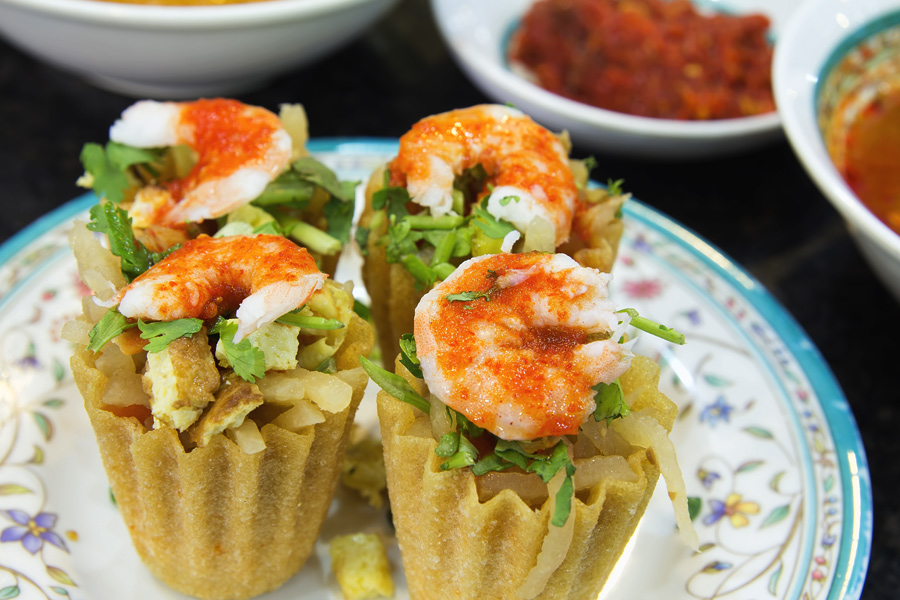[fshow photosetid=72157658263168072]
Peranakan Chinese, or Baba Nyonya as they like to call themselves, are descendants of Chinese immigrants that settled in Peninsular Malaysia and what is now Singapore between the 15th and 17th centuries. While the Peranakan kept some of their ethnic and religious origins, other facets of their culture were assimilated into the culture of the Malays and today cities like Singapore, Kuala Lumpur and George Town on Penang all display a strong Peranakan culture.
Peranakan Museum
One of the best places to learn about the Peranakan and their culture is the Peranakan Museum in Singapore. Built in 1912 as the Tao Nan School, the design has elements of a typical classical building with fluted columns and an emphasis on symmetry, while the layout follows the bungalows of the time with rooms arranged around a common central hall. With just a few years of suspension during the Second World War, Tao Nan acted as a school all the way up to 1994 when it was converted into the Asian Civilisations Museum. During this time, the permanent exhibition at the museum focused on showcasing the rich culture of the Peranakan and at the end of 2005, the ACM was closed to make way for the Peranakan Museum.
Exhibitions vary but amongst the permanent exhibitions are galleries showcasing a variety of Peranakan traditions and culture including weddings, religion, public life, food and language and fashion. Special exhibitions change regularly but for a year from May 2015 to April 2016 visitors can enjoy Great Peranakans: Fifty Remarkable Lives, which celebrates 50 men and women who have shaped Singaporean life and culture over the past two centuries in areas of art, politics and public life.
Peranakan Architecture
For those with an interest in Peranakan architecture, Peranakan Place is the place to go. Most commonly traders, Peranakan Chinese acted as middle men between the Chinese and the Malays, and the Malays and Chinese and British, and to this day many Peranakan are still involved in trade. The exposure to so many cultures meant that Peranakan architecture became a mixture of Chinese, Malay and British influences, and what used to be a row of typical terrace houses where families lived and conducted their business has today become a beautifully restored row of restaurants and bars. Step inside the small alleyway and marvel at the facades, which have been painted and polished so that the tile and wood detailing appear as bright and fresh as one imagines it was when the buildings were constructed.
Also don’t miss the Katong and Joo Chiat area, which is home to the largest and most well-kept concentration of Peranakan architecture in Singapore, most of which were built in the early 20th century. These Peranakan shophouses boast some magnificent stucco, tiles and woodwork.
Peranakan Food
Peranakan food is a unique mix of Chinese and Malay influences. Typical dishes include chicken kapitan, a dry chicken curry made with galangal, candlenut, lemongrass and kaffir lime leaves. Its rich flavour is enhanced by belacan, a piquant fermented shrimp paste. Another popular Paranakan dish is ayam buah keluak, a rich chicken dish cooked with the nuts from the “Kepayang” tree, a mangrove tree that grows in Malaysia and Indonesia. Cooked as they are the nuts are poisonous, so in order to make ayam buah keluak, the nuts are soaked up to seven days in advance.
To try traditional Peranakan cuisine, head to one of House of Peranakan’s restaurants. Each outlet has its own charm but opt for the Peranakan Inn, which is where it all started. The restaurant is housed in a century-old Peranakan shophouse in Katong and was one of Singapore’s first Peranakan restaurants. Order the Nonya Platter for a sample of some of the best Peranakan cuisine has to offer.
For a more modern Peranakan culinary experience, head to Dorsett Residences where Candlenut is located. Chef Malcolm Lee has made a name for himself in Singapore with his Paranakan heritage and western culinary training, which he brings together at Candlenut in beautiful harmony. The food is more refined than at Peranakan Inn but not less satisfying and the flavours are supposedly authentic.
Tips:
- For details about permanent, current and upcoming exhibitions at Peranakan Museum, check out http://peranakanmuseum.org.sg/
- For excellent Peranakan food try House of Peranakan http://houseofperanakan.com.sg/ or Candlenut http://www.candlenut.com.sg/
- For an overview of the restaurants, bars and events at Peranakan Place, see http://peranakanplace.com/

